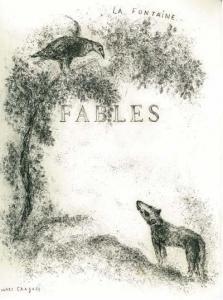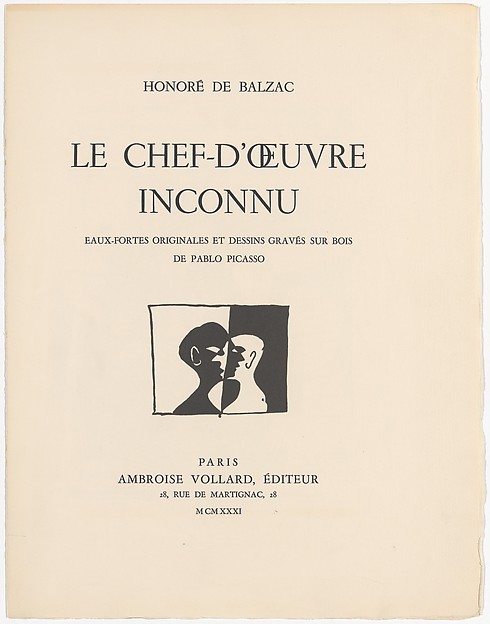I found that, among the books we explored in this last set, there were various relationships between the text and the artwork.

In Fables, we saw a more traditional mise en page. The artwork played the role of illustration, but it was not a mere decoration: It was presented as playing a role, equally important in understanding the text, but still confined to its own quarters. An exception to this was found on the title page, where the artwork had a more dynamic and dominant presence. The name of the artist and other information were confined to the corners among the foliage as the images spread across the title page, transforming it into an inviting scene, drawing you in to discover what lay amid the pages.
Although Picasso’s work in Le Chef-d’oevre Inconnu was not integrated with the text, there was a play between the two, as evidenced by the wordless introduction comprised of lines and dots, often resembling musical instruments. On the title page (see below), we see the image of two overlapping faces. The O and E in the title do this as well. For the first time, there is a clear dialogue between the images and text, the latter of the two beginning to enter the realm of artwork, which we see come to fruition in Cortege and Jazz.

In Jazz, the literature and artwork were well balanced. The calligraphic font played off the vivid pochoirs. This made sense, as the narrative seemed to contain a similar dialogue with the images. This was also the case for Cortege, which held bold pages of text that bled to the very edge and complimented the audacious collages which were also without margins. The justified text was no longer viewed as words, but, rather, a visual field of color and shapes — an abstract block, just like the artwork.
Books, such as A Toute Epreuve, displayed the artwork as the dominant partner. The quiet font was often pushed by the lively blobs and squiggles out of the confines of the traditional margins to linger, off-centered, in the far corners of the page.
So far, we have seen little deviation from the traditional format of the codex, but a shift in and greater variety of text-artwork relationships.
